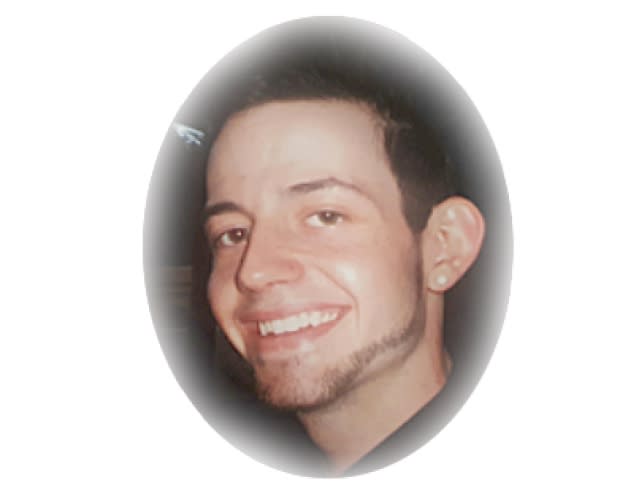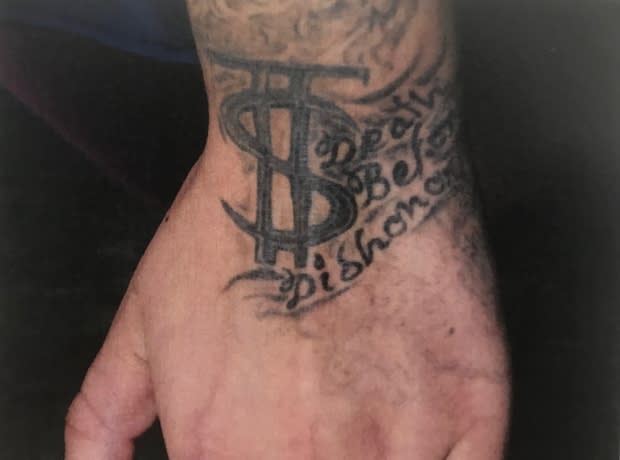Terror Squad 101: Profiler offers rare peek into inner workings of Saskatoon drug gang at murder trial
There are the signature colours they wear on their members-only bandannas and other clothes: black peppered with white, a mixture Saskatoon police officers describe as "paisley black."
Or they might flash the letters "T" and "S" with their hands at someone on the street, in silent defence of their home turf.
But the intimidation tactics used by members of Saskatoon's Terror Squad gang can escalate to home invasion, robbery and even murder.
That's just one of the many rare insights offered Tuesday in a Saskatoon Court of Queen's Bench courtroom by one of the two Saskatoon police officers who tracks and surveils members of the notorious but little-understood drug gang.
Det. Const. Trent Dybvig of the Saskatoon Police Service's guns and gangs unit was the last Crown witness in the ongoing murder trial of 20-year-old Shaylin Sutherland-Kayseas.
Sutherland-Kayseas — who has admitted to being a member of the gang — is accused of beating and shooting 26-year-old Dylan Phillips in October 2016. The attack took place in the home of Phillips's parents on Saskatoon's Avenue G N., which falls within the Terror Squad's drug-dealing territory.

Dybvig's testimony did not explicitly tie Sutherland-Kayseas to Phillips's death.
But Crown prosecutor Melodi Kujawa said she called Dybvig to the stand to flesh out one of the charges against Sutherland-Kayseas — murder for the benefit of a criminal organization.
"In order for the judge to understand how that's possible, he needs to hear how they operate, how they're organized, what some of the terminology means that we've heard in this trial," said Kujawa.
As Judge Shawn Smith said of Dybvig: "He's got one job. Watch the Terror Squad."
'Missions' to terrorize rivals
One of the first terms defined by Dybvig, "mission," refers to a gang member's assignment from a higher-up to either "terrorize" someone (such as members of rival gangs Indian Posse and Hustle Crew) or conduct business involving drugs, weapons or property in order to generate cash for the Terror Squad.
If the mission is to terrorize an outsider dealing drugs on the Terror Squad's turf, "more than likely there will be violence against that person," said Dybvig.

Missions not only benefit the gang as a whole but offer members a chance to prove their loyalty and move up the ranks of the gang.
That's as true of female members as it is for a gang's stereotypically male "soldiers," Dybvig said.
"Because of the era we're living in, gender equality is also evolving within the gang industry," he said.
His testimony drew on his six years as a Saskatoon patrol officer and his last two years and eight months as a profiler of the Terror Squad.
The gang first came on radar of Saskatoon police in 2006 and currently numbers over 200 active members in Saskatoon, Prince Albert and North Battleford, including members who are behind bars.
Dybvig's profiling involves collecting gang information either directly through the use of informants (he had up to three at one point) or from other officers, law enforcement agencies and even social media sites like Facebook, which gang members use to communicate.
If other police officers bump up against gang members during contact interviews on the street, a "gang card" is generated and added to a person's file by Dybvig.
'Education you can't get in a book'
His job also involves a considerable amount of direct surveillance of gang members, suspected members and associates — "at their residence or just out walking around, as well on any kind of social media," said Dybvig, adding that on some weeks, more than half of his work hours are devoted to surveillance.
"It's a huge part of the job," he said.
Jessie Buydens, Sutherland-Kayseas's defence attorney, questioned Dybvig about his qualifications.

Dybvig admitted he had no formal education in studying gangs, beyond his attendance at conferences that also touched on gangs from Alberta, B.C. and the United States.
But he added, "Actually being on the street and dealing with these members, that's education you can't get in a book."
Under questioning from Buydens, Dybvig said some of his informants are paid money if their information results in charges. They may be recommended for softer treatment from Crown prosecutors if they too are facing charges.
But some wave off the incentives.
"Sometimes I've had people in the past and they just want mutual respect, and they don't want anything else in return," said Dybvig.
60-second beatings for new members
Dybvig spent much of his testimony explaining the inside terms used by Terror Squad members.
"Flag" refers to the signature black-and-white bandanna given to new members, while to be "stripped" is to have your bandanna and membership in the gang taken away.
"Minute" is code for the 60-second beating delivered to some new Terror Squad members upon their initiation.
Some are spared that brutal welcome if they have relatives in the gang.
"A lot of family have multiple generations within the gang, from parents to son," said Dybvig.
He also described some of the gang's organizational structure, including a "council" of upper-rank members who sometimes even meet within correctional institutes and a lower-level "city council" made up of appointees who report on the gang's business activities.
Kujawa, the Crown prosecutor, admitted some misgivings about offering such intimate details of the gang.
"Sometimes I'm not entirely sure I want the public to know everything because I know it scares people," she said.
"I guess I'd have to say I did it in furtherance of my case. And if the public is educated and they're happy to be educated, that's a good thing."
The trial, which began on Sept. 10, continues.

